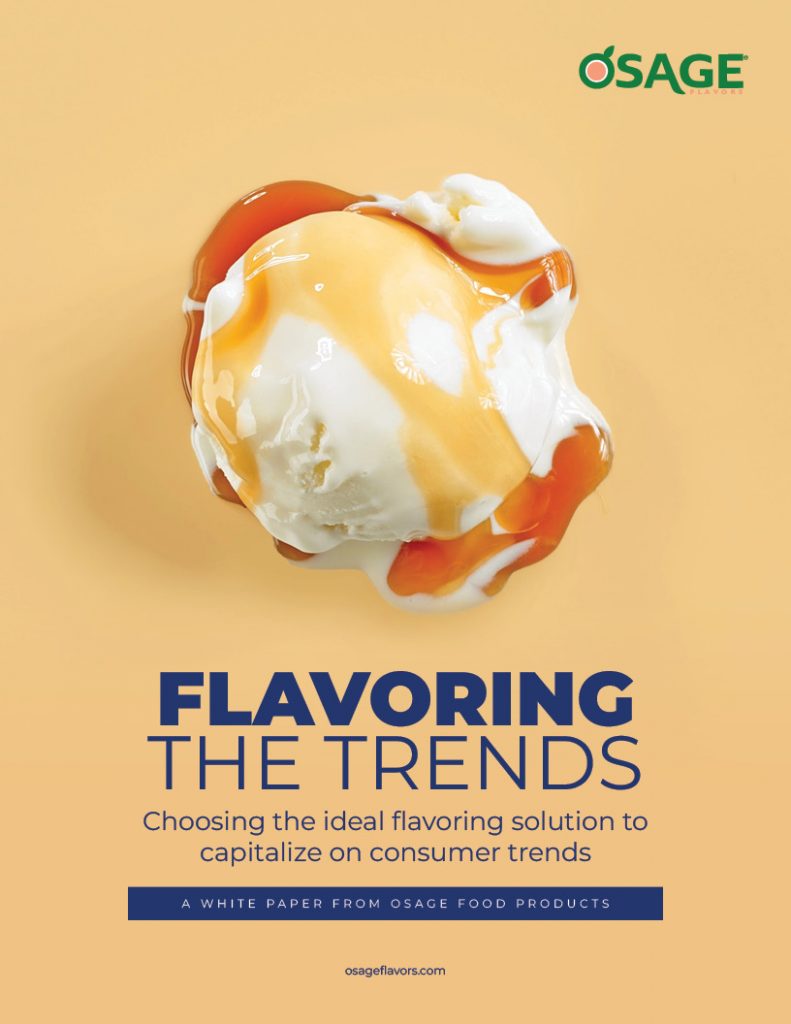The digital age has opened up the world of cuisine to the masses, with videos on cooking foods from different corners of the globe easily accessible at a moment’s notice. This, plus the fact there’s more to choose from nowadays, has played a crucial part in driving new generations to want more innovation from their food.
Manufacturers must now look to sensory allures to influence their customers’ consumption, purchase intent, and satisfaction. Companies often focus on taste, appearance, and smell, but including the other two senses – sound and texture – unlocks a sensory mastery that can help extract value and quality.
As a result of new cuisines becoming more accessible, younger generations are now more interested in experimenting with new tastes and international dishes. They value foods that appeal to all senses, and their natural curiosity means that simple foods products are no longer as appealing.
Using Sound To Enhance The Experience
It’s easy to forget that listening plays a vital role in why we enjoy food. The sound of grilling or the crunch of fresh bread immediately ignites our craving for quality food. A study from back in 2012 found that consumers directly relate sounds to specific tastes.
This phenomenon is known as “cross-modal correspondence”, where our brain associates taste and sound.
Food producers must look at this as another tool for guiding consumers to the taste that they desire. Take chips, for example. A tasty crunch is often associated with quality and enhances the enjoyment of eating them. This can also be used to influence marketing campaigns, as cross-modal correspondence research shows that higher pitch sounds tend to be associated with sweeter and sour tastes and lower-pitched sounds with bitterness. For example, a high-pitched soundtrack would be helpful in the background of a video ad for chocolate.
Texture Is Comforting In Food Products
On the other hand, texture acts as a confirmation tool. Most of us don’t enjoy eating things we don’t know. This is why we are comforted by knowing textures – for example, knowing that a cookie is a cookie and rice is rice. It enables us to determine whether a food is soft, crunchy, creamy, jellied, or dry and is often a screening phase where we either accept the food or politely decline.
An undesirable texture can completely ruin a great-tasting dish. Think of substitute foods, such as gluten-free and vegan options. Companies spend a significant part of their time researching ways to mimic the texture of the real thing. The flavor can be there, but consumers will immediately reject it as inferior to the original if the texture isn’t right.
With plant-based and healthy foods growing in popularity, food manufacturers must ensure that they apply enough attention to texture to enhance the experience.
Make Food Products Attractive
There are various positives to making food pleasant to behold. First, it’s inviting, and since many people enjoy posting pictures of their food online, creating visually appealing products can be an excellent way for companies to advertise their food for free. Consumers will usually tag the company and provide a free link to its social media page or website.
Good-looking food also affects taste. We’re more likely to try food that looks attractive and inviting. Our senses react well to vibrant colors that give us the understanding that the food is top quality and fresh.
Studies have shown that making food visually appealing will even make basic dishes seem more flavorful. So, manufacturers must ensure that they create a visual design that appeals to their target audience.
Does It Taste As Good As It Looks?
Now, it’s no good making food that looks delicious only to taste terrible. If anything, this makes it worse, as consumers will feel betrayed. How many times do we pick an item because it looks good only to be met by a terrible taste that doesn’t resemble the look in any way? Taste is perhaps the most important of all the senses to get right. Great taste is what will bring consumers back to the product.
All the other senses work together to enhance the taste of the food. This is why manufacturers need to take an all-inclusive approach to consider how all five senses when creating the best possible product. Companies should be asking how they can use sound and texture to enhance the taste and use the smell of the food to entice the consumer to take a bite.
Read More: Putting The Flavour In Functional Foods
Food Needs To Smell Good
When our sense of smell is impaired, food tends to taste bland or not the same as we’re used to. This highlights that much of food’s taste comes from our ability to smell. We have close to 400 odor receptors that receive molecules from food and inform our bodies that what we’re eating is pleasant and tasty.
It’s fair to say that smell is just as crucial to producing quality products as taste. Companies can use this taste-smell connection to create aromas consumers associate with the brand. This can help build brand loyalty and drive return business.
Unlocking Potential
Products that perfect all five senses are best qualified to showcase excellent quality that attracts consumers. Companies must take this approach to create food products that will be accepted by younger generations and promote repeat business. Consumers are now more interested in value. They want to know where their food comes from and how it was produced. This is a huge positive, as it means they’re invested in the food industry and can appreciate quality.
This strategy also paves the way for new market entrants, as the most millennials are willing to pay more for quality products. Significant market players can no longer completely dominate the market on name alone. They must also implement a complete sensory experience to provide the best possible food quality.




